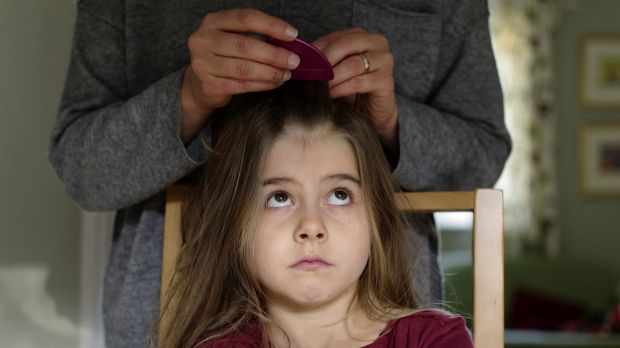
Not picky: Head lice along with bedbugs are becoming tough to exterminate.
Did you hear about the two bed bugs that met in the mattress? They were married in the spring.
It’s an Ellen DeGeneres joke but if you have ever been a victim of cimex lectularius and rows of terrible itching bites you’ll know it’s no laughing matter.
A new study to be published early in the new year conducted by the Department of Medical Entomology, Westmead Hospital and the University of Sydney reveals that the common bed bug in NSW has developed resistance to insecticides.
Report co-author Cameron Webb, medical entomologist with University of Sydney and NSW Health Pathology, says bed bugs don’t discriminate about where they set up residence and that includes some top Sydney hotels.
“It doesn’t matter to the bed bug whether it is a five star hotel or a backpacker’s hostel, they still arrive in people’s belongings and set up camp,” he said. “The financial implications are far greater for the five star hotel.
“We know there has been evidence of a resurgence in bed bugs over the last decade and this paper shows that the local Sydney strains are resistant to insecticides which explains that resurgence.”
The research compared the Sydney strain to a strain susceptible to insecticides. The study found that to exterminate the Sydney bed bug compared to the susceptible strain it required 250 times as much of the insecticide bendiocarb, 370,000 times as much deltamethrin and 1,235 million times as much permethrin.
It concluded: “The inability to control bed bugs with existing products and insecticides will necessitate a reconsideration of control methodologies and product registration processes employed against this resurgent pest. This research has significant operational implications for bed bug control and the registration process of new products in Australia.”
Mr Webb said a similar problem existed with head lice with reports that they are also gaining resistance to some of the commonly used insecticides but more research was needed.
“When you are using products that contain an insecticide it provides an opportunity for insecticide resistance to develop inside the headlice populations,” he said.
NSW Health advice is to put a conditioner on the hair and comb it with a headlice comb but he said it was easy to miss eggs and for the condition to spread in schools, especially in young girls.
The bed bug resurgence is also happening in the US and features in a book Unnatural Selection just published here by Emily Monosson an American environmental toxicologist.
She says antibiotics, pesticides and pollution are all exerting intense selection pressure on all manner of things including gonorrhea (new strains are more easily spread and resist treatment even with strong antibiotics) as well as bed bugs, different varieties of flu, and weeds in agriculture showing resistance to pesticides.
She writes of bed bugs “We almost had them beat only to face a pest that has managed to regroup and return with better defenses. Yet even those pests we wish to eradicate persist, too many others never slated for destruction – bees, damsel flies, frogs and songbirds –face extermination, if not extinction.”
“We live in dangerous times with infectious diseases rapidly evolving beyond our medical reach returning us to a pre-antibiotic age.”
“We beat life back with our drugs, pesticides and pollutants, but life responds. It evolves.”
In the US she says seven million pounds of antibiotics are tossed used. The appetite in Australia is similar. The National Antimicrobial Prescribing Survey released in November found 30 per cent of prescriptions were deemed to be inappropriate mainly due to unnecessary use of antimicrobials and incorrect duration of treatment.
Data on the amount of pesticides used in Australia is not publicly available.
